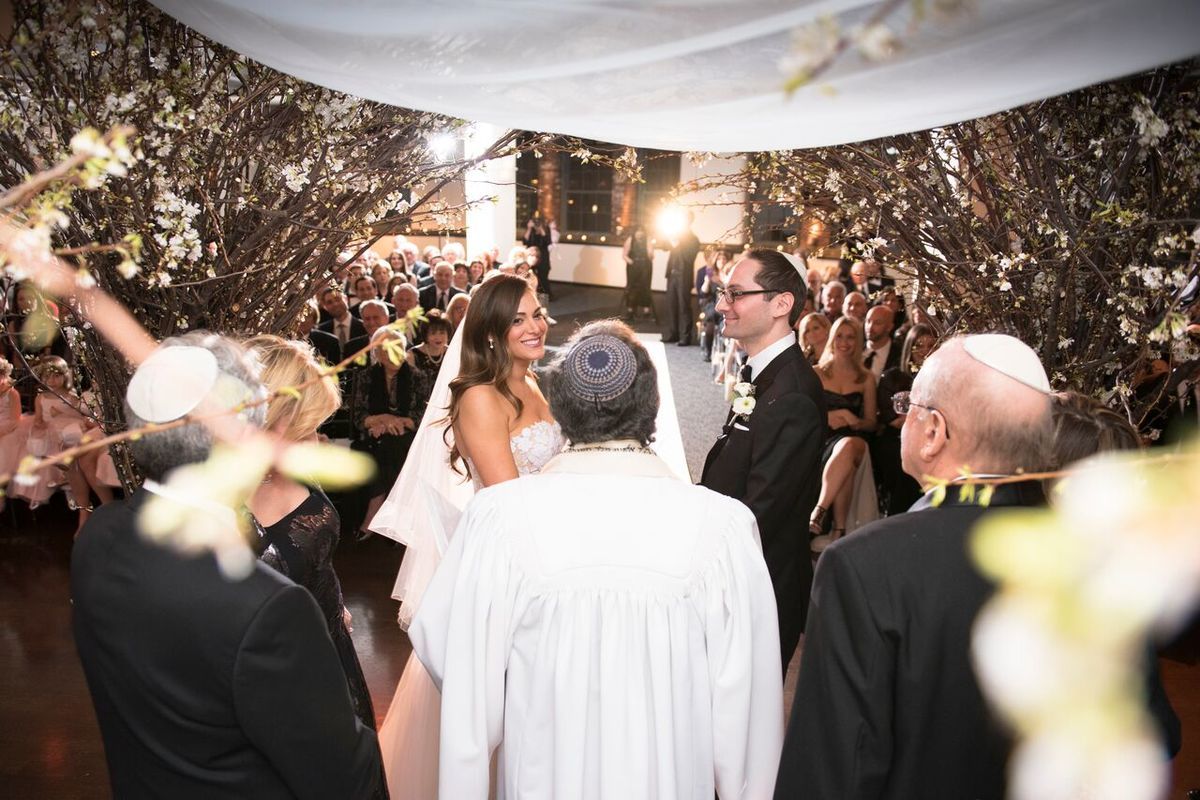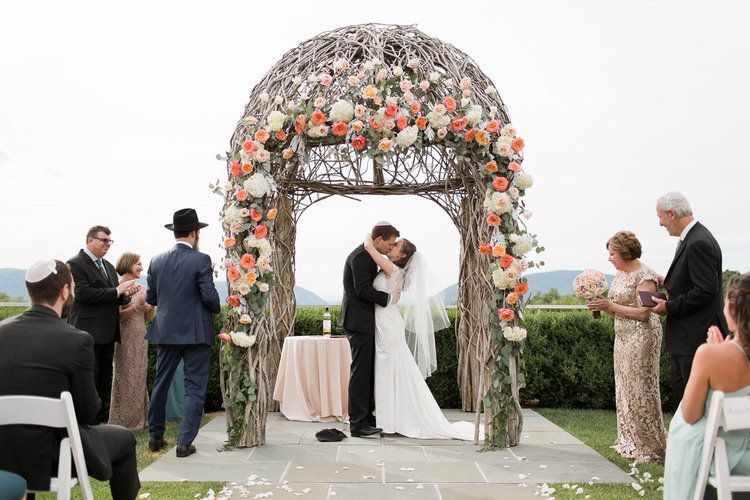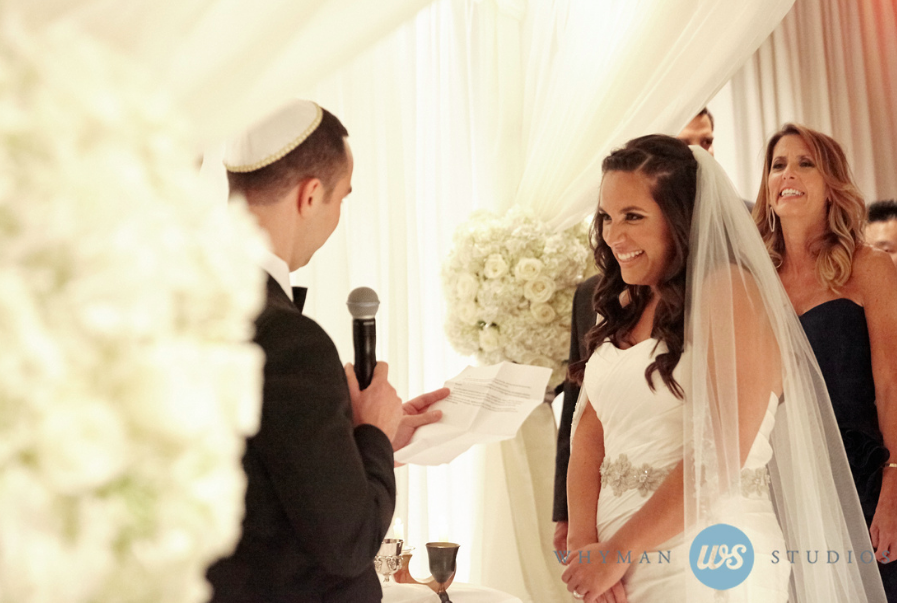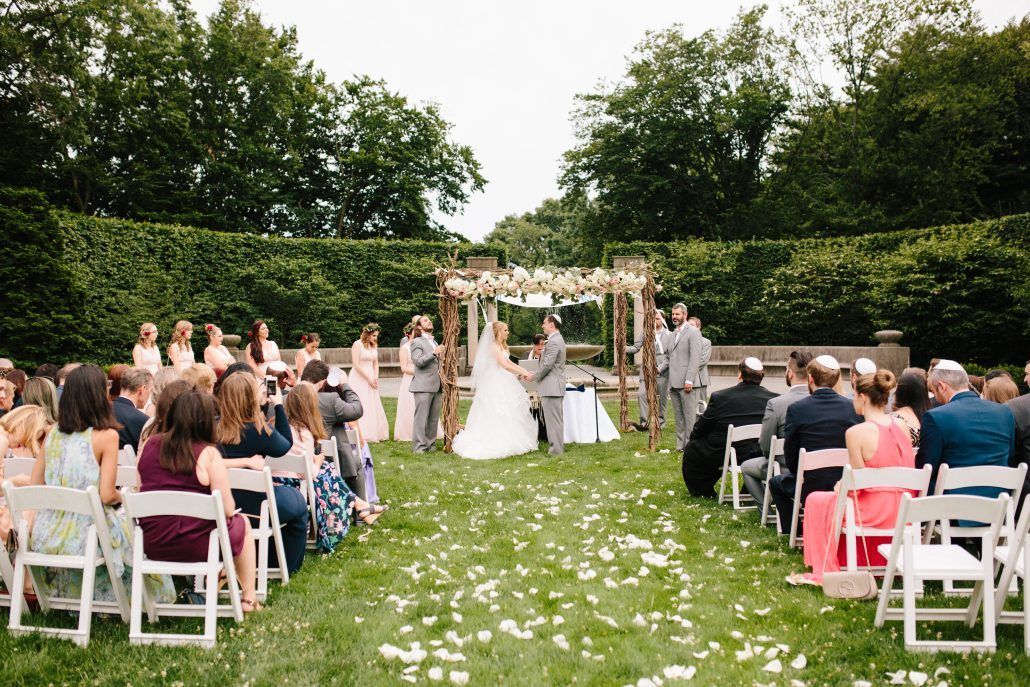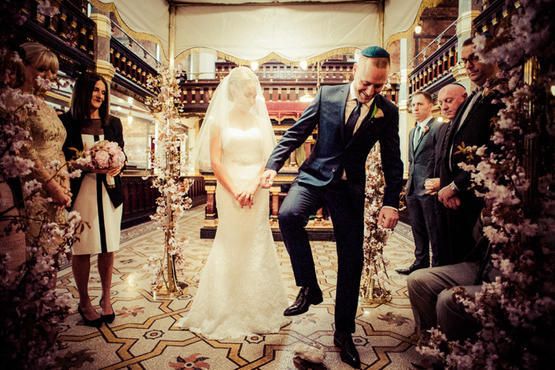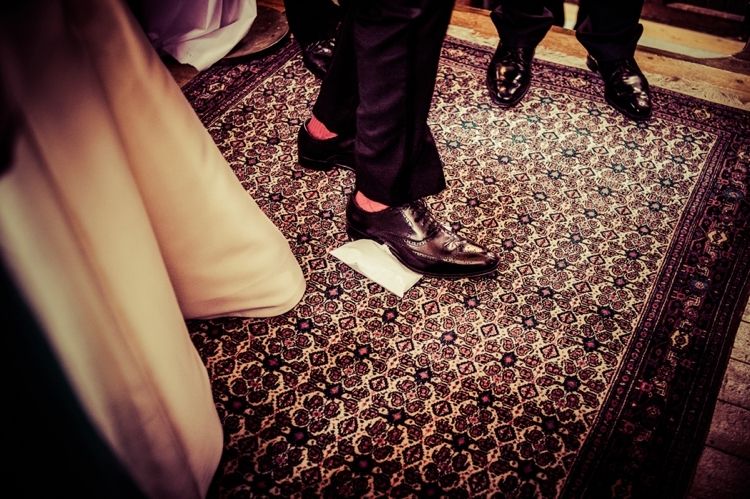Planning & Inspiration
The Ritual, Meaning, and Joy of the Jewish Wedding Ceremony
Working weddings in New York City means you’re lucky enough to be surrounded by multiple cultures and a variety of fabulous wedding traditions. Bride & Blossom has been lucky enough to work with brides whose weddings celebrate the many cultures and religions that make this city one of the greatest in the world! With each ceremony comes the opportunity to translate unique traditions into a wonderful expression of a couple’s love. A beautiful example of this is the Jewish wedding ceremony, which is full of meaningful rituals symbolizing the union between a husband and wife and their bond to the Jewish community.
Highlighting the history, meaning, and joy of Jewish marriage rituals that join the chatan (Hebrew for groom) and kallah (bride) for life. From the chuppah and breaking of the glass to the yihud, here’s your guide to a traditional Jewish ceremony.
Kabbalat Panim
On their wedding day, the bride and groom are considered royalty. The Jewish wedding begins with the kabbalat panim, which translates to ‘the receiving of faces.’ Just like a queen and king, the couple receives their guests in two separate events – the Hachnasat Kallah for the bride and Chosen’s Tish for the groom. The bride is seated on a throne-like chair where she is usually greeted by the female guests who are there to provide her needs. During the Chosen’s Tish, which means ‘groom’s table,’ the male guests gather around the groom and drink toasts. The groom tries to read a passage from Torah while guests interrupt him by shouting song. It is intended to keep the mood light and good-spirited.
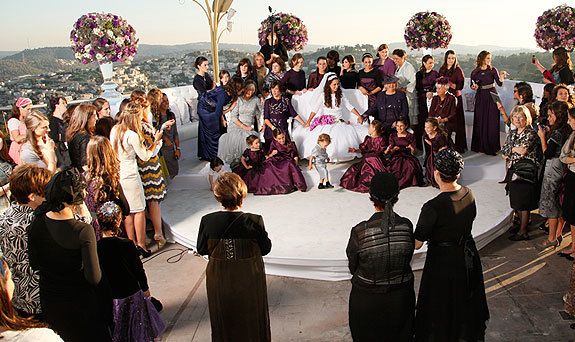
Jewish Traditions – The Kabbalat Panim – via Jewish Wedding 101
Badeken
The couple sees each other for the first time during the Badeken, or veiling of the bride. A symbol of modesty, the veil expresses the idea that above physical appearance, the groom is drawn to his bride’s inner beauty. The male guests lead the groom to the bride’s room where she is surrounded by her female guests. He looks at his bride before lowering the veil over her face. The custom comes from the biblical story of Jacob’s love for Rachel – Jacob did not see his bride’s face before the ceremony and was tricked into marrying the wrong sister.
Chuppah
The wedding takes place under the chuppah, a canopy that is open on all sides and symbolizes the home of the soon-to-be-married couple. Dating back to when the Jewish people roamed the dessert, the structure recalls the tent of Abraham and Sarah, which was open and welcoming to others. There are no formal requirements regarding the chuppah’s appearance. We’ve had the privilege of working with brides on the design and floral decoration, and love watching how the chuppah becomes a beautiful expression of a woman’s personality and style.
- Hannah and Toni – The Garrison – Chuppah -Photography by Melissa Kruse
- Leah & Michael – Bouquets – Le Parker Meridien – Photo by Whitman Studios
- Cammie & Peter – Chuppah – Brooklyn Botanic Garden – Photography by Nicki Sebastian
Circling
The bride and groom are escorted into the chuppah by their respective set of parents. Next, the bride circles the groom seven times symbolizing the seven days of creation and the building of the walls of their new world together. The number seven is also significant because it symbolizes wholeness and completion.
Kiddushin
Kiddushin means Blessings of Betrothal and takes place under the chuppah. After the Rabbi recites the betrothal blessings, the bride and groom take a sip from a ceremonial cup of wine.
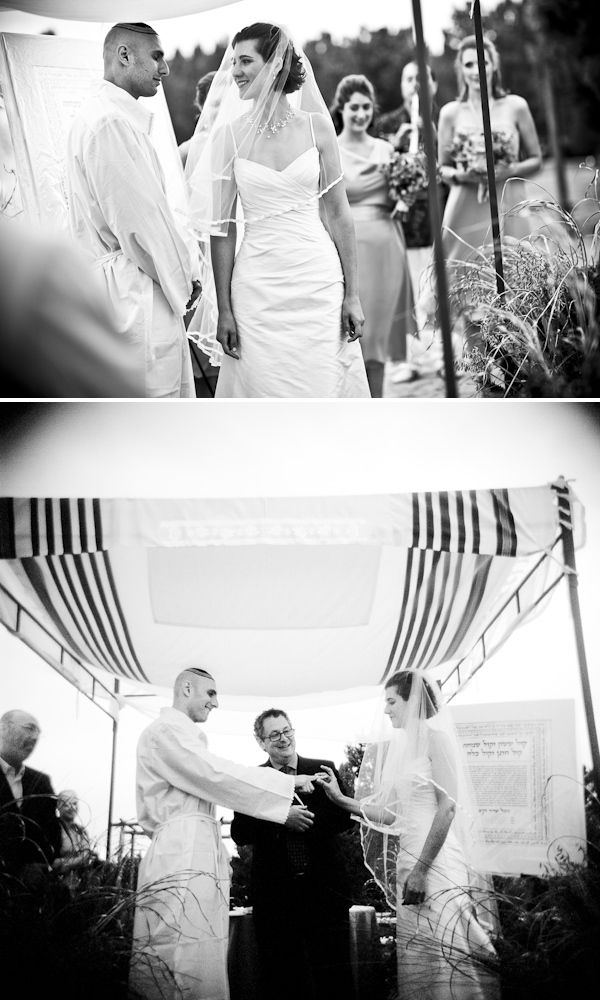
The Kiddushin – Betrothal – Jewish Wedding Traditions – Avi & Eleana – photo by Twin Lens Images – via Little Black Book
Giving of the Ring
The groom places a ring on the bride’s right index finger in clear view of two witnesses while reciting an ancient Aramaic phrase. Jewish law requires the ring to be made of precious metal and without decoration or stones, which symbolizes a marriage of simple beauty. Not permitted in some Orthodox weddings, the double-ring ceremony continues with the bride sliding a ring on the groom’s index finger.
Ketubah (Marriage Contract)
The Ketubah, marriage contract, is read aloud in Aramaic and English. It is signed by two witnesses and stands as a legally binding agreement. This is the point in the ceremony when the first part Kiddushan (betrothal) ends, and the latter part called Nissuin (marriage) begins.
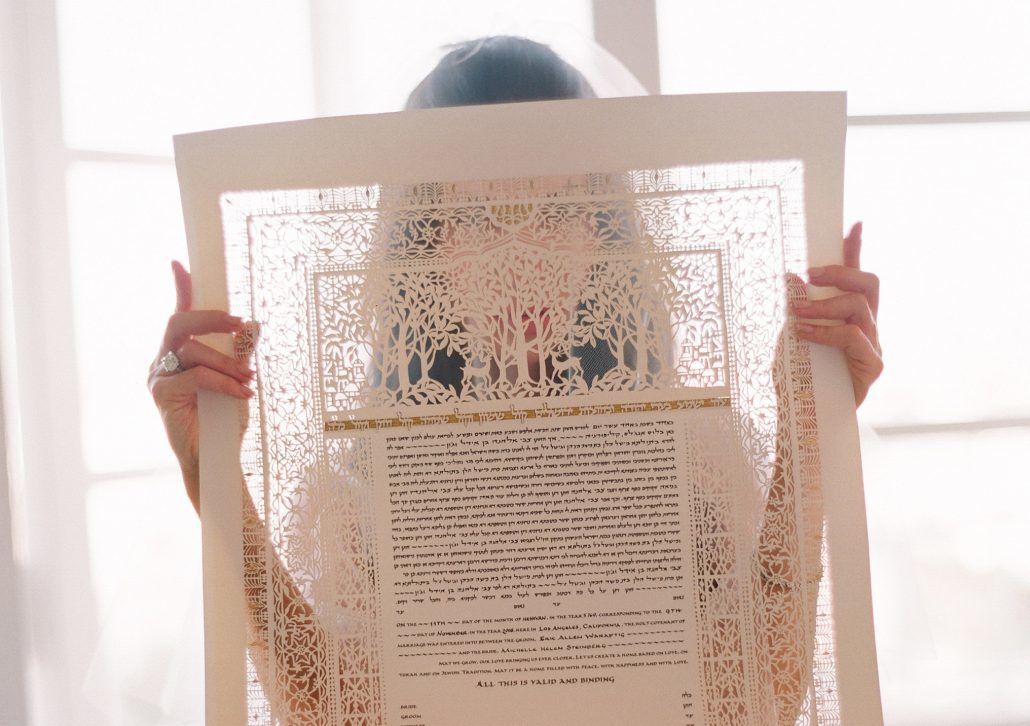
Ketubah – Jewish Traditions – Jewish Wedding. Contract – via Inside Weddings
Sheva Brachot (The Seven Blessings)
The theme of the sheva brachot, or The Seven Blessings, links the couple to our faith in God as Creator of the world, Bestower of joy and love, and the ultimate Redeemer of our people. The blessings are recited by the Rabbi, chosen friends and family members, or all guests in attendance.
Breaking of the Glass
The best-known Jewish wedding tradition is the breaking of the glass. Traditionally, the groom shatters a wineglass under his foot. But it is perfectly acceptable for the bride to get in on the fun these days. Reasoning behind the ritual varies: a symbol of the destruction of the Temple of Jerusalem; a reminder to the couple that life is full of sorrow and joy; a symbol of the fragility of relationships. For wedding guests, the sound of breaking glass means it time to shout “Mazel Tov!” and get the party started. Smashing the Glass.com is dedicated to featuring this tradition of many brides and grooms.
- Breaking the Glass – Jewish Wedding Traditions – Gallery by Blake Ezra
- Breaking the Glass – Jewish Wedding Traditions – Final Shot – Gallery by Blake Ezra – via Smashing The Glass.com
The Yihud
It’s been a whirlwind day for the couple. The Yihud, which means seclusion, is a ritual during which the couple retreats to a private room where they can have a moment together to reflect on their new partnership as husband and wife.
As you can see, there are many symbolic rituals make up the Jewish ceremony, creating a day filled with meaning, love, and joy that celebrates the union of husband and wife.
